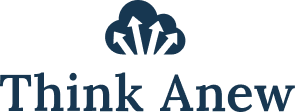Profiles in Character: John F. Kennedy Admits Mistakes and Learns
On April 16, 1961, 1,400 men of “Brigade 2506” landed at a beach in the Bay of Pigs on the island of Cuba in a CIA-sponsored covert paramilitary effort to enlist domestic opponents of Fidel Castro in overthrowing his regime. John F. Kennedy was barely three months into his presidency. The invasion failed, dealing Kennedy a major military and diplomatic setback.
While planning for Castro’s overthrow began under President Eisenhower, it was Kennedy who gave the “green light.” The president-elect had met with Eisenhower the day before his inauguration and asked Eisenhower’s opinion. Eisenhower encouraged the effort to remove Castro but cautioned that the operation should go forward only if a credible leader and government in exile existed. Neither ever did.
In early February, National Security Advisor McGeorge Bundy told Kennedy that "Defense and CIA now feel quite enthusiastic about the invasion." There were some expressions of caution, but planning continued.
When the paramilitary force that landed came under attack, Kennedy denied it direct air cover or reinforcements. This was, he felt, necessary to prevent accusations that the U.S. had launched the effort to topple Castro. Eisenhower had advised him to support the invasion even if he had to do so publicly, but Kennedy ignored the advice. The failure to support the invasion proved decisive.
On April 21, at a State Department press conference, Kennedy acknowledged the disaster and took responsibility: "There's an old saying that victory has a hundred fathers and defeat is an orphan ... Further statements, detailed discussions, are not to conceal responsibility because I'm the responsible officer of the Government."
On April 22, he formed the Cuba Study Group to identify lessons learned. The report attributed the disaster to a variety of planning and logistical mistakes. But a major factor, which Kennedy came to realize, was that he used a faulty decision making process characterized by a lack of diverse viewpoints, robust discussion, the challenging of assumptions and the tendency to silence dissent.
In an April 24th memorandum, Bundy concluded that: "The morals of those failures are readily drawn . . . The President's advisers must speak up in council. . . . The President and his advisers must second-guess even military plans . . . What is and is not implied in any specific partial decision must always be thought through."
Indeed, the plan had not received a rigorous and full staff review. The Joint Chiefs had said that the chances of success were "fair," and Kennedy assumed this was a positive sign (not seeing that "fair" was much less than "good" or "excellent"). The military's real judgment, however, was that the odds were three to one against success, but they did not challenge the CIA in part because the plan did not call for regular military forces.
“How could I have been so stupid?” Kennedy asked, calling the Bay of Pigs a “colossal mistake.” Kennedy commented to journalist friend Ben Bradlee: "The first advice I'm going to give my successor is to watch the generals and to avoid feeling that because they were military men their opinions on military matters were worth a damn.”
Those with reservations about the plan, he now understood, were silent, silenced, or ignored. For example, Robert Kennedy nixed the concerns of Arthur Schlesinger, Special Assistant for Latin American Affairs, by telling him that "You may be right or you may be wrong, but the President has made his mind up. Do not push it any further."
To further assess the debacle, Kennedy asked Eisenhower to come to Camp David less than a week after the failed invasion. Eisenhower asked Kennedy: “Mr. President, before you approved this plan did you have everybody in front of you debating the thing so you got pros and cons yourself and then made your decision, or did you see these people one at a time?” Kennedy admitted he did not have a full meeting of the National Security Council (NSC).
Kennedy’s willingness to acknowledge and learn from his mistakes proved crucial in October 1962 when the Soviet Union placed nuclear missiles in Cuba. Kennedy structured a decision process to avoid the “groupthink” of the Bay of Pigs. Chief elements included: (1) expanding the National Security Council so military and intelligence views were balanced by advisors with different experiences; (2) insisting that every option be discussed thoroughly with its assumptions and the implications of actions fully vetted; (3) absenting himself from some discussions so that everyone in what was called the ExComm could speak without worrying about his reactions or embarrassing their superiors; and (4) refusing to accept the first options (military attack and invasion) and pressing for others.
Special Counsel Ted Sorensen later commented on Kennedy’s decision making process. In regard to the military, Sorensen noted that “For major problems we faced, the economists always wanted an economic solution; we lawyers wanted a legal solution; diplomats wanted a diplomatic solution. Why should I not be surprised that the military wanted a military solution?
The blockade of Cuba and the diplomatic moves Kennedy adopted averted nuclear war.
Photo Credit: Official Portrait by Aaron Skikler
(If you do not currently subscribe to thinkanew.org and wish to receive future ad-free posts, send an email with the word SUBSCRIBE to responsibleleadr@gmail.com)






